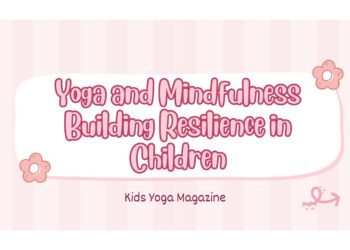In today’s fast-paced world, children are often faced with stress, anxiety, and a range of emotions that can be overwhelming. Teaching them mindful breathing exercises is an effective way to help them manage these feelings, improve focus, and promote a sense of calm. Mindful breathing is a simple yet powerful tool that children can use anytime, anywhere, to help them navigate their emotions and regain control over their mental state. Here are some easy and engaging mindful breathing exercises that are perfect for kids.
1. Balloon Breathing
Balloon Breathing is a fun and imaginative way to introduce mindful breathing to children. This exercise encourages deep belly breathing, which helps calm the nervous system and reduce anxiety.
- How to Do It:
- Ask your child to sit or stand comfortably with their hands on their belly.
- Instruct them to take a deep breath in through their nose, imagining that they are inflating a big balloon in their belly. Their belly should expand as they breathe in.
- Then, have them slowly exhale through their mouth, imagining that the balloon is deflating. Their belly should gently contract as the air is released.
- Encourage them to repeat this process several times, focusing on the rise and fall of their belly with each breath.
Benefits: Balloon Breathing helps children become more aware of their breath and body, promoting relaxation and reducing stress.
2. Flower Breathing
Flower Breathing combines visualization with deep breathing to create a calming and pleasant experience. This exercise helps children focus on positive thoughts and sensations.
- How to Do It:
- Have your child imagine holding a beautiful flower in their hand.
- Instruct them to take a deep breath in through their nose, as if they are smelling the flower’s sweet fragrance.
- Ask them to hold their breath for a moment, savoring the smell, and then slowly exhale through their mouth, as if they are gently blowing on the flower to keep it alive.
- Repeat this process a few times, encouraging your child to focus on the pleasant sensations of smelling the imaginary flower.
Benefits: Flower Breathing helps children connect with their breath in a positive and enjoyable way, which can be particularly helpful during moments of stress or anxiety.
3. Counting Breaths
Counting Breaths is a simple technique that helps children focus their mind and improve concentration. It’s an effective exercise for calming the mind before bedtime or during stressful situations.
- How to Do It:
- Ask your child to sit or lie down in a comfortable position.
- Instruct them to close their eyes and take a deep breath in through their nose, counting “1” in their mind.
- As they exhale through their mouth, have them count “2.”
- Encourage them to continue this pattern, counting each inhale and exhale up to 10, and then starting over from 1.
- If their mind starts to wander, gently remind them to bring their focus back to their breath and the counting.
Benefits: Counting Breaths helps children improve their focus and mindfulness, making it easier for them to manage their thoughts and emotions.
4. Bumblebee Breathing (Bhramari)
Bumblebee Breathing, also known as Bhramari in yoga, is a calming exercise that involves making a gentle humming sound. This exercise is particularly effective for reducing anxiety and creating a sense of inner peace.
- How to Do It:
- Have your child sit comfortably with their eyes closed.
- Instruct them to take a deep breath in through their nose.
- As they exhale, ask them to make a soft humming sound, like the buzzing of a bumblebee.
- Encourage them to feel the vibrations of the humming sound in their head and chest.
- Repeat this exercise for several breaths, allowing them to focus on the soothing sound and vibration.
Benefits: Bumblebee Breathing helps children calm their minds and bodies, promoting relaxation and reducing anxiety. The humming sound also provides a gentle sensory experience that can be very soothing.
5. 5-4-3-2-1 Grounding Exercise with Breathing
This exercise combines mindful breathing with a grounding technique that helps children stay present and connected to their surroundings. It’s an excellent way to reduce anxiety and regain a sense of control during overwhelming moments.
- How to Do It:
- Ask your child to take a deep breath in and out, and then start by looking around the room to identify:
- 5 things they can see
- 4 things they can touch
- 3 things they can hear
- 2 things they can smell
- 1 thing they can taste
- After they have identified each item, have them take another deep breath in through the nose and out through the mouth, focusing on how their body feels.
- Repeat the exercise if necessary, encouraging your child to stay connected to their breath and the present moment.
- Ask your child to take a deep breath in and out, and then start by looking around the room to identify:
Benefits: The 5-4-3-2-1 Grounding Exercise helps children reduce anxiety by focusing on their senses and surroundings, while mindful breathing enhances the calming effect.
Conclusion
Teaching mindful breathing exercises to kids is a powerful way to help them manage stress, anxiety, and other emotions. These exercises are simple, engaging, and can be practiced anywhere, making them accessible tools that children can use throughout their lives. By incorporating mindful breathing into your child’s daily routine, you can help them develop emotional resilience, improve focus, and promote overall well-being. Whether at home, in school, or on the go, these mindful breathing techniques provide a foundation for a balanced and peaceful life.












